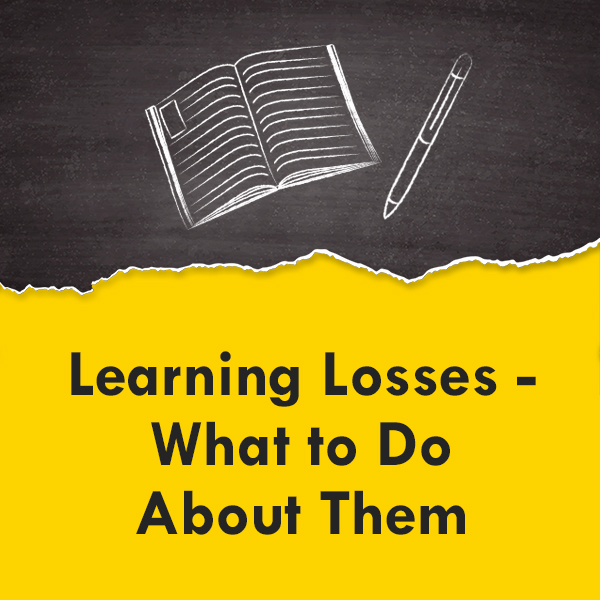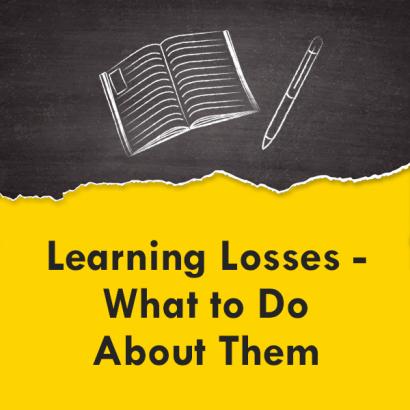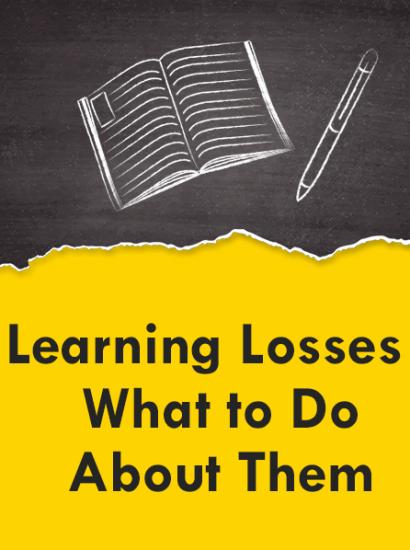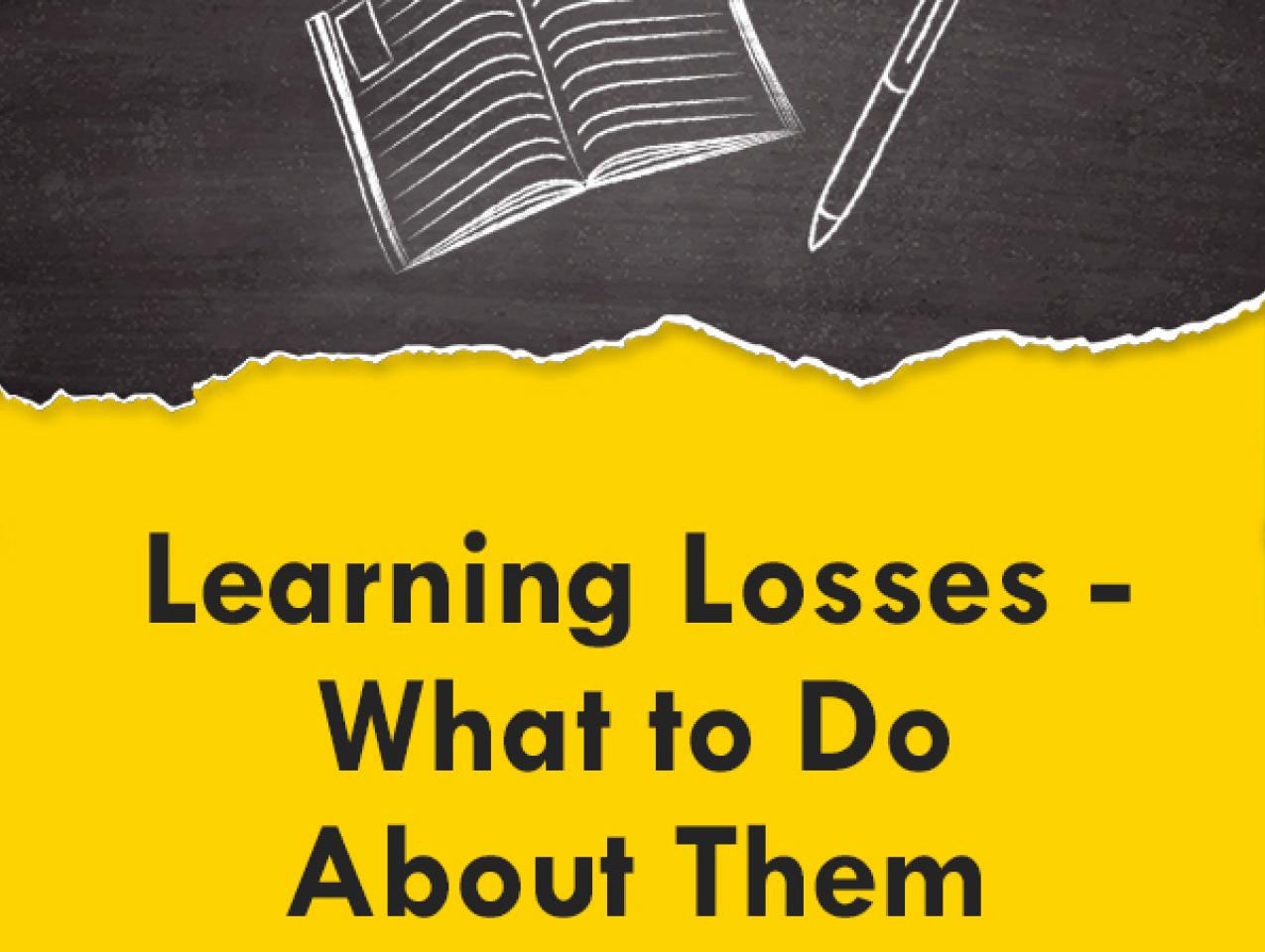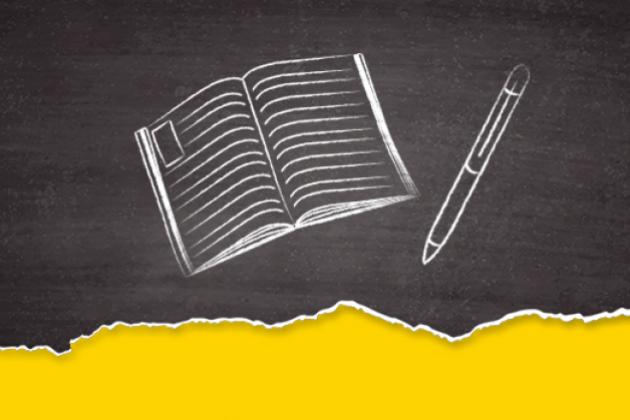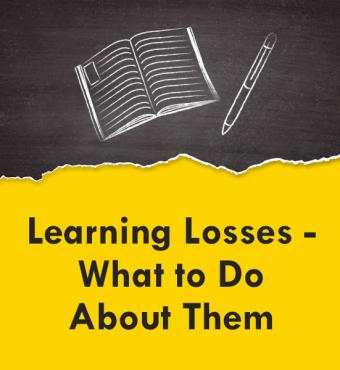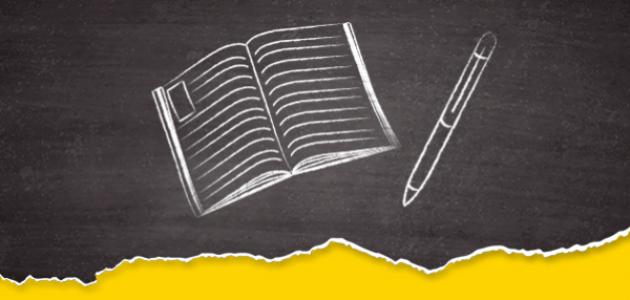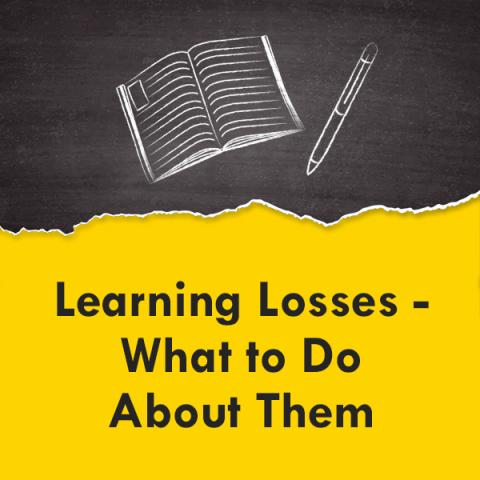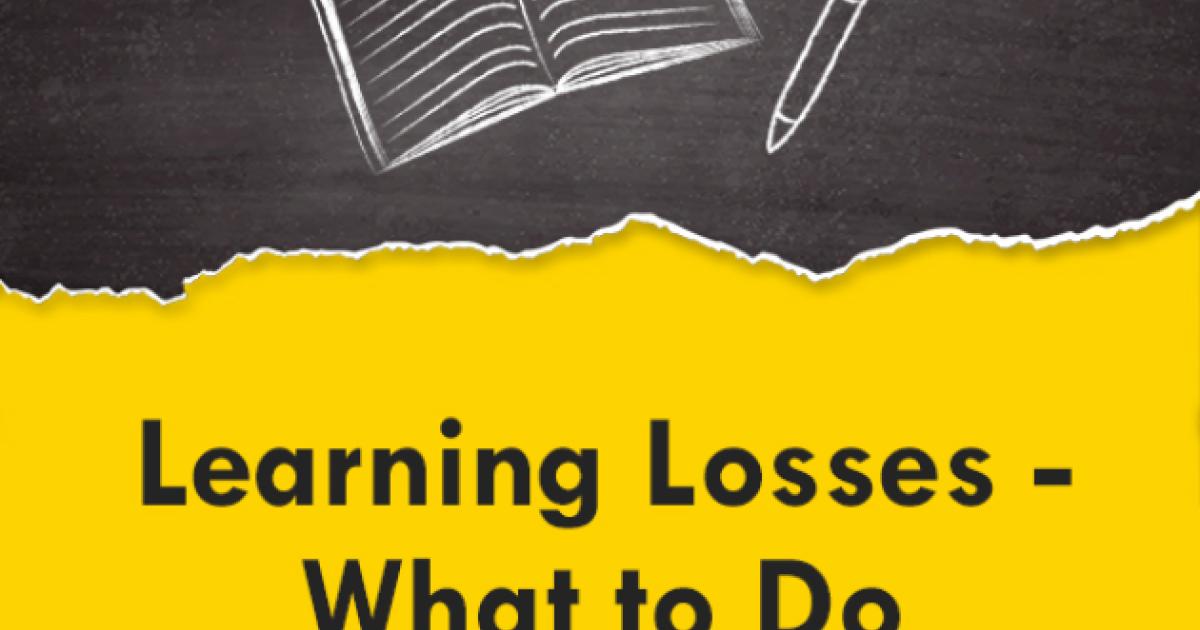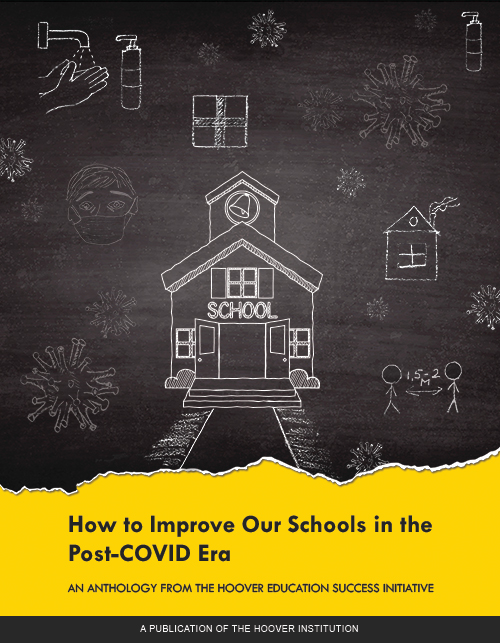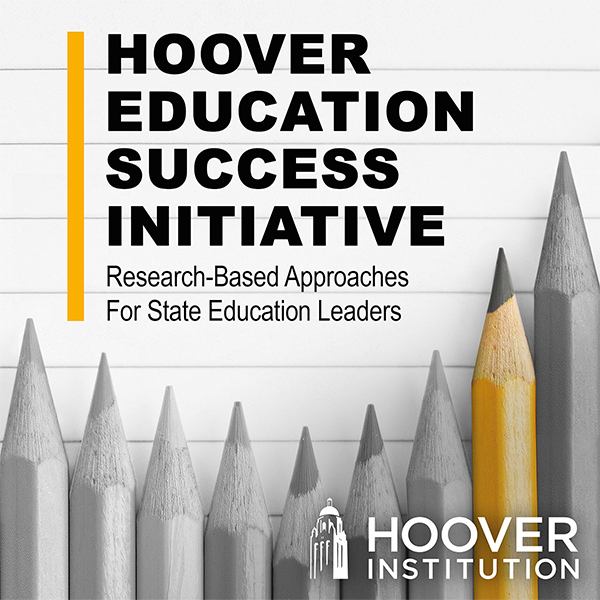- Education
- Reforming K-12 Education
Recommendations
In early 2020, education leaders across the globe watched in dread as the coronavirus pandemic unfolded, with dire consequences for schools and those attending them. Dealt a hand of bad to worse options, they conscientiously chose to protect educators and students by closing school buildings, sending everyone home, and redirecting educators to instruct remotely. Local conditions—both medical and political—continue to shape the course of the 2020–21 school year, resulting in a slate of arrangements including schools in various states of openness, millions of children still trying to learn from home, and continued disruption to normal education activities.
While the pandemic continues to ebb and flow, state and local education leaders understandably have to maintain focus on immediate challenges. At the same time, they are committed to mitigating the impacts of COVID-19-related decisions on students. Policy leaders must create plans to move students forward as quickly and as far as possible. The sooner they address the immediate and longer-term issues, the better they will meet the mounting needs of the students they serve.
This chapter lays out the challenges and offers specific action steps that state and local education leaders can take. In particular, recovery should be structured around these recommendations:
-
The academic and socio-emotional needs of students should be the paramount driver of long-term recovery plans.
-
Leaders must prepare strategies that recognize the vastly different impacts of COVID-19 and remote learning on students, particularly low-income, Black, and Brown students, English learners, and those with special needs. In many cases, the COVID-19 impacts compound earlier learning challenges, requiring long-term approaches. State education leaders can use their authority to reframe expectations of adult performance to ensure that students with the largest losses are not passed over.
-
Multiyear plans that integrate individualized academic instruction and support will require a wider and more diverse range of school models and options than before. For the foreseeable future, state and local education leaders should ensure that all providers in all settings have the opportunity to contribute high-quality education programs.
-
Traditional structures of age-based K–12 grades, teacher assignments, and fixed time units for instruction will not accommodate the dramatic recovery operation that American education faces. Policy makers must continue to insist on rigorous collection and analysis of data on learning and program impacts to be able to evaluate their decisions and make course corrections as needed.
What We Know
The COVID-19 pandemic created disruptions in all facets of US K–12 education. The evolving science of the virus comingled with varying attitudes about public health and economic protections to create a patchwork of responses. The decisions by states, school districts, and charter organizations have varied widely, often lurching between full school closure and full in-person instruction.
As early as April 2020, many observers understood that patchy accommodations to a dire situation would ultimately translate into significant loss of learning opportunities—and actual learning—for students. The presumption was correct, but the scale and scope of the damage was underappreciated.
Several groups, including my own team at Stanford’s Center for Research on Education Outcomes (CREDO), undertook simulations to estimate the magnitude of achievement setbacks that students were likely to experience by the end of the 2019–20 school year (Dorn et al. 2020; Kuhfeld et al. 2020; Raymond et al. 2020). While estimates of missed learning ranged from one-third to two-thirds of a year learning in reading and one-half to a full year in math, they united on the alarming prospect that low-income students, educationally disabled English learners, and low-achieving students would feel the greatest damage. The impact of these disruptions will be lifelong and unequally distributed, hitting disadvantaged students the hardest (Dorn et al. 2020; Hanushek and Woessman 2020).
In the 2020–21 school year, scraps of information have already emerged about the continuing impact on student learning (Kuhfeld 2020; PACE 2021). The most optimistic finding from the NWEA (based on a sample that the author recognizes had low-income and high-minority schools underrepresented) is, “Not as bad as it could be.” Other estimates are starker in laying out both large losses overall and dramatic gaps across student groups in the losses they have experienced.
What we can see is only the tip of the iceberg. While universal data are lacking due to pauses in assessment programs, additional details from other sources illumine the contours and extent of the education crisis our nation faces. Enrollments in district schools have declined. Large numbers of students were unaccounted for in the fall 2020 enrollment reports in several districts (Borr 2021; Korman, O’Keefe, and Repka 2020). The press has offered a view of learning pods, the bastion of advantaged families that either supplement or supplant school enrollment with group-based home schooling.
Most families, however, face more pragmatic challenges. Large swaths of students remain remote without access to adequate broadband or suitable digital learning equipment; as much as 40 percent of students in some districts have had no direct instruction the entire 2020–21 school year to date; the share with chronic absences (missing more than ten days of school) has risen sharply. Teachers providing remote instruction report fewer hours of instruction, leading to jettisoning portions of the curriculum, giving cursory coverage of many topics, or directing students to cover material on their own.
The picture is grim: We have lost track of many students. Those we know about are unevenly capable of accessing online instruction, and those who do connect are generally missing instructional time. Even where students are physically present in school buildings, they are on reduced instructional rations. ✏1 Finally, there are few efforts to map or track what students are receiving or how much they are absorbing. Most policy makers have no hard information on the magnitude of the problem, and education leaders are making plans to address the lost learning of students under conditions of high uncertainty.
How to Move Forward
The adage “If you always do what you have always done, you will always get what you have always gotten” sets out clearly the challenge that lies ahead. It is inconceivable that America might write off an entire generation of students, but there is a chance we will create that exact result unless policy makers make bold and long-lasting changes to the American public school system.
A growing conversation posits that returning students and teachers to unchanged school settings will be insufficient. Students will have widely differing collections of knowledge and skills—wider than ever seen before and too wide to be successfully handled by a return to the pre-pandemic status quo. Earlier, smaller disasters have shown the lasting damage of returning students to unchanged schools—many students never recovered (Jaume and Willén 2019; Gibbs et al. 2019).
Classic forms of schooling—one teacher instructing similarly prepared pupils at a common pace—will not begin to accommodate the breadth of student academic needs. ✏2 Directing teachers to teach “on grade level” will only exacerbate the situation by slighting the needs of children with larger learning interruptions and gaps. Yet this enormous challenge also offers the opportunity and necessity to take a different course. Significant change is possible and needed and must overcome well-organized efforts to revert to former ways. ✏3 We must place stronger reliance on objective information, adopt clear and transparent commitments to long-term effort, and embrace the practical need for many more diverse approaches to meeting students where their learning stands and bringing them forward from there.
At the same time, it is important to acknowledge that in an ideal world, we would have a rich understanding of the effectiveness and scalability of the proposed interventions. Sadly, the evidence base for many of the ideas under discussion is thin or has limited scale.
Full Intel Needed
- Map student learning at the end of the 2020–21 school year and again in fall 2021. Given how splintered children’s experiences have been, there is no other way to assess the damage consistently. That doesn’t mean using these data for school accountability, but such data are essential for accurately mapping the learning landscape and to serve as baselines to measure progress. One option is to have “open assessments” where questions aligned to the most critical learning standards are administered over a relaxed period—the aim is to see what specific strengths and weaknesses students have. In parallel, parents need valid and reliable assessments of their students’ learning to gain a clear picture of how they are faring in the coming years. Whatever combination of education resources or choices parents employ, they need a consistent way of measuring their students’ performance and the ability to compare the result against other standard benchmarks.
- ✏4 Even if the starting positions of students are known, it is also important to understand differences in how quickly students learn; two students at the same starting point may not progress at the same rate. Historical measures of student academic growth can suggest how quickly students can progress to close their personal learning gaps, assuming that appropriate instruction and supports are tailored to the closing of such gaps.
- State leaders can support local decisions by providing a survey of available educator talent and instructional resources, including inactive educators. The need for human capital will rise sharply as schools grapple with the breadth and depth of the instructional needs. At the same time, state and local leaders should anticipate surges in retirements and other exits in the coming eighteen to twenty-four months and will need plans in hand to respond.
- ✏5 Assess student and teacher social, emotional, and physical well-being. There is substantial evidence from earlier disruptions that the emotional and psychological impacts on performance and well-being are long-lasting. Again, there is no judgment implied, just a need to be fully aware of the breadth and depth of trauma and resiliency and incorporate the information into recovery planning.
Get Real
- There is real pressure to return immediately to the pre-COVID-19 operation of schools. But the sheer scope of the challenge of ensuring that students move forward academically, whatever their baseline educational status, demands recognition and consensus that academic recovery will be a multiyear effort for most students. ✏6 ✏7 Sustained leadership will be essential. Preparing to support them for extended periods will be helped by federal aid if resources are deployed wisely. The risk remains that the appetite for long-term support among lawmakers and budget leaders will taper sooner than the need for it.
- Existing regulations and practices that equate seat time with learning or set fixed thresholds of knowledge as the performance benchmark cannot hold up in the face of large differences in student learning. The pace of learning will almost certainly be more varied than it was pre-pandemic, requiring new notions of performance grounded in mastery. State education officials can offer local education agencies flexibility and support to move students to new material and further levels of instruction when they are ready, not on a fixed calendar.
New Tools for Tough Times
-
✏8 The existing suite of public education options (zoned-enrollment schools, in-district open enrollment, charter schools, or alternative education programs) remains set on a fixed pace of learning that cannot match the reality of student needs. Students will have unique bundles of knowledge and skills and unique parts and pieces missing.
Even as schools reopen in spring 2021, details on how schools will adapt their approaches are fuzzy (McCann and Dusseault 2021). ✏9 The public education sector will need to tap education models that can completely individualize instruction to meet students at their starting levels, which may differ across subjects and grades. It is no exaggeration to suggest that every student will need an Individual Education Plan (IEP) to fully mobilize the resources needed for recovery and future mastery. ✏10 National and state-level efforts to highlight and expand effective schools would give concrete examples of how responsive to student needs all schools must become.
- ✏11 Education leaders also face the need to consider new approaches to staffing. Depending on the recovery plans selected by districts, they may need to augment existing teacher ranks in different ways. For example, instead of a single teacher assigned to a limited number of students, the best teacher in a region might lead lessons that are broadcast to many students (including possibly through public television or cable access channels) (Vanourek 2020). Alternately, a new cadre of tutors might work intensively with a few students who share a similar base of knowledge. ✏12 Tutoring is one of the very few programs that have been shown to be both effective in improving student learning and able to use lower-cost staff, so it’s possible for broad-scale deployment (Slavin and Lake 2008). In either of these examples, the focus of some of the teachers might shift to diagnosing the gaps or blocks that prevent particular students from advancing and delegating the time-intensive one-on-one work to teaching assistants or tutors. ✏13 Flexing the staffing model may be a necessity, especially in hard-to-serve settings, but it also could open avenues for alliances with community organizations that could provide the human capital that is needed.
- More people have gained their “technical chops” over the past year, so there is no better time to incorporate personalized learning technologies than now. While earlier research on the effectiveness of digital approaches to instruction shows weak results, the pandemic has raised the level of foundational knowledge and facility in using tech tools, so a significant barrier to earlier success would not apply (Slavin and Lake 2008). Technologies are essential components for diagnosing, positioning, and advancing student learning, especially given the breadth of student starting points and the varied paces at which different children learn different things. Teacher professional development is an important ingredient in this strategy. In other countries, schools have in-house support for technology-guided instruction, which could be expanded here. States and the federal Department of Education could play a critical role in fostering deployment and adoption of a number of alternatives coupled with careful evaluation of their impact on student learning.
- ✏14 Recovery plans will draw on expertise from educators, child development specialists, and other community resources. Coordination across systems is notoriously challenging. One solution is a universal student information record owned by parents. Organizations that serve students could contribute details on which services students used and the interim and long-term outcomes they produced. Parents would have to share portions of the record with schools and agencies to support the delivery of services they choose for their child. In parallel, service providers might keep related records of the child and their experience for program planning and improvement.
It is clear that the most important requirement to address successfully the current condition of student learning is the political will to forge new directions and policies. So much depends on it!
References
Borr, T. G. 2021. “Large Numbers of Pupils Are No Longer Enrolled in America’s Schools.” The Economist, February 6. https://www.economist.com/united-states/2021/02/06/large-numbers-of-pupils-are-no-longer-enrolled-in-americas-schools.
Dorn, Emma, Bryan Hancock, Jimmy Sarakatsannis, and Ellen Viruleg. 2020. “COVID-19 and Learning Loss—Disparities Grow and Students Need Help.” McKinsey & Company, December 8.
Gibbs, Lisa, Jane Nursey, Janette Cook, Greg Ireton, Nathan Alkemade, Michelle Roberts, H. Colin Gallagher, Richard Bryant, Karen Block, Robyn Molyneaux, and David Forbes. 2019. “Delayed Disaster Impacts on Academic Performance of Primary School Children.” Child Development 90, no. 4 (July/August).
Hanushek, Eric, and Ludger Woessmann. 2020. “The Economic Impacts of Learning Losses.” OECD Education Working Papers 225 (September 10), https://doi.org/10.1787/21908d74-en.
Jaume, David, and Alexander Willén. 2019. “The Long-Run Effects of Teacher Strikes: Evidence from Argentina.” Journal of Labor Economics 37, no. 4 (October).
Korman, Hailly T. N., Bonnie O’Keefe, and Matt Repka. 2020. “Missing in the Margins: Estimating the Scale of the COVID-19 Attendance Crisis.” Bellwether Education Partners, October 21.
Kuhfeld, Megan, James Soland, Beth Tarasawa, Angela Johnson, Erik Ruzek, and Jing Liu. 2020. “Projecting the Potential Impacts of COVID-19 School Closures on Academic Achievement.” Educational Researcher 49, no. 8.
Kuhfeld, Megan. 2020. “Reading Suffered Less Than Expected During Pandemic, New Fall 2020 Student Data Show.” Education Next, December.
McCann, Sarah, and Bree Dusseault. 2021. “Learning Loss Update—Districts Quiet on How They Plan to Help Students Recover from a Year of Continued Disruption.” The 74, March 15.
PACE (Policy Analysis for California Education). 2021. “COVID-19 and the Educational Equity Crisis: Evidence on Learning Loss from the CORE Data Collaborative,” January 25. https://www.edpolicyinca.org/newsroom/covid-19-and-educational-equity-crisis.
Raymond, Margaret E., Chunping Han, Sofoklis Goulas, Won Fy Lee, and Charla Waeiss. 2020. “Estimates of Learning Loss in the 2019–2020 School Year.” Center for Research on Education Outcomes, Stanford University, October. https://doi.org/10.13140/RG.2.2.26746.72642.
Slavin, Robert, and Cynthia Lake. 2008. “Effective Programs in Elementary Mathematics: A Best-Evidence Synthesis.” Review of Educational Research 78, no. 3 (September): 427–515. https://doi.org/10.3102/0034654308317473.
Vanourek, Gregg. 2020. “Schooling Covid-19: Lessons from Leading Charter Networks from Their Transition to Remote Learning.” Thomas B. Fordham Institute, August 25. https://fordhaminstitute.org/national/research/schooling-covid-19-lessons-leading-charter-networks- their-transition-remote.







